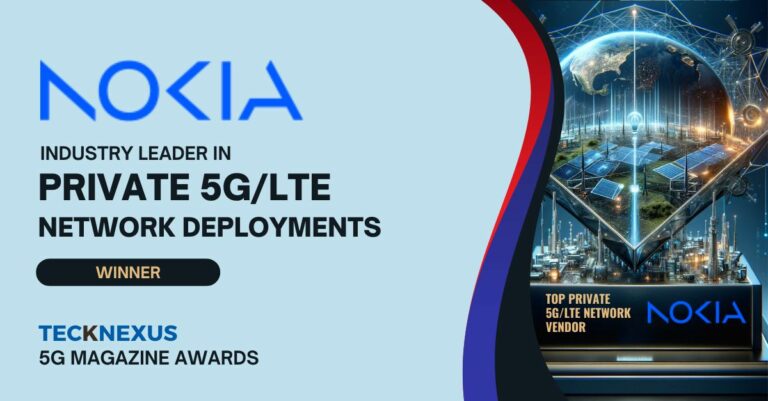Introduction: Advancing Industry 4.0 with Cumucore’s 5GLAN and TSN Technologies
The industrial sector is evolving, with factory automation transitioning into a new era, often referred to as Industry 4.0. This shift is characterized by an increased integration of advanced communication technologies and automated systems, aiming for higher efficiency, flexibility, and self-regulation in manufacturing processes. In this context, Cumucore has emerged as a key player, particularly in the realm of Layer 2-based mobile communication, which is fundamental to this new phase of industrial development.
At the heart of this evolution is the need for more dynamic and responsive communication systems within factory settings. Traditional automation systems, largely static and designed for specific tasks, are giving way to more adaptable and interconnected networks. Cumucore’s focus has been on enhancing these networks, specifically through the development of 5GLAN and Time-Sensitive Networking (TSN) technologies. These advancements are not just about elevating communication speeds or bandwidths; they are about creating a more cohesive and responsive environment where machines and systems can interact with greater precision and reliability.
The Technical Challenge: Bridging Legacy and Future in Factory Automation
Integrating modern mobile technology into existing factory infrastructures presents a unique set of challenges. Most traditional factories are built on a foundation of legacy systems that use Layer 2 communication protocols, primarily Ethernet-based networks. These protocols are well-suited for the controlled, predictable environments of early industrial automation but are less adaptable to the dynamic requirements of Industry 4.0.
Layer 2 (Data Link Layer) communication operates by transferring data between adjacent network nodes within the same network segment. It uses physical addresses (MAC addresses) for data transfer, which works well in fixed configurations but becomes less efficient in more fluid and mobile settings. On the other hand, mobile networks predominantly use Layer 3 (Network Layer) protocols, like IP (Internet Protocol), which are designed for routing data across various and changing network segments, offering greater flexibility and mobility.
The challenge, therefore, is to create a harmonious integration between these two layers. The need is to maintain the robustness and reliability of Layer 2 communications while infusing the adaptability and mobility of Layer 3 protocols. This integration is crucial for enabling machines to not only communicate with each other within a factory but also to do so while moving and adapting to different operational scenarios. Cumucore’s role in addressing these challenges is critical, as they work towards developing technologies that bridge these two worlds, facilitating a more synchronized and efficient factory environment that aligns with the ideals of Industry 4.0.
Innovative Solutions: The Advent of 5GLAN and TSN in Factory Settings
Development and Implementation of Cumucore’s 5GLAN Technology: Cumucore‘s 5GLAN technology represents a key development in modernizing factory communication systems. This technology is designed to bridge the gap between traditional Ethernet-based networks (Layer 2) and the more dynamic mobile network infrastructure (Layer 3). The primary objective of 5GLAN is to enable User Equipment (UE) within private 5G networks to acquire identifiers of other UEs, facilitating seamless communication for applications within a LAN setting. This is particularly significant in factory environments where the mobility of machines and the need for real-time interaction are increasingly important. 5GLAN supports various discovery mechanisms, which are essential for device identification and interaction in LAN networks. These mechanisms allow devices within the network to discover and communicate with each other efficiently, a crucial element for integrating mobile technologies into factory systems. The implementation of 5GLAN by Cumucore in factory environments has been aimed at enhancing the connectivity and communication fluidity between various components of the manufacturing process.
Role and Importance of TSN Technology in Factory Operations: Time-Sensitive Networking (TSN) technology is another significant aspect of Cumucore’s offerings. TSN focuses on delivering precise time synchronization over Ethernet, which is vital for operations that require microsecond-level accuracy. In factory settings, where processes and machinery need to operate in a synchronized manner, TSN ensures that data packets are delivered within a tightly controlled time frame. The implementation of TSN in factory settings addresses the critical need for timely and reliable data transmission, which is fundamental for the efficient and safe operation of automated machinery. By incorporating TSN, Cumucore is facilitating an environment where time-sensitive tasks are executed with higher precision, leading to improved overall efficiency and safety in industrial operations.
Cumucore’s Edge: Why Our Private Network Technology Stands Out
Regulated Frequency Advantage: One of the key advantages of Cumucore’s technology in factory environments is its operation on regulated frequency bands. This aspect simplifies the management of interference compared to unregulated frequencies like those used by Wi-Fi. Moreover, regulated frequencies allow for higher output power, which can result in better coverage and reliability, which is especially critical in dense industrial settings.
Built-in Mobility and Continuity: Cumucore’s technology incorporates built-in mobility. This ensures that data sessions are maintained continuously across the factory, even as User Equipment moves within the facility. This feature is crucial for operational efficiency, particularly in dynamic environments where equipment and machinery are constantly on the move.
Enhanced Security Features: Security is a paramount concern in industrial settings, and Cumucore’s technology addresses this through the use of SIM cards for authentication in 5G networks. This approach provides a higher level of security compared to traditional Wi-Fi networks. Additionally, the capability for standalone operation means that the network can function independently without the need for external connectivity, further bolstering security against external threats.
In summary, Cumucore’s 5GLAN and TSN technologies offer practical and efficient solutions for modernizing factory communication systems. These technologies bring enhanced connectivity, precision timing, and improved security to industrial environments, aligning with the evolving needs of Industry 4.0.
Real-World Benefits: Enhancing Industries with Private Networks
Cost-Effectiveness: Private networks, such as those enabled by Cumucore’s technology, offer a cost-effective solution for factory communications. The key factor here is the reduced need for extensive cabling, which not only lowers initial installation costs but also decreases long-term maintenance expenses. Additionally, in certain applications, the reduction in weight due to less cabling is beneficial, particularly in environments like vessels or mobile platforms. This cost advantage is significant for industries looking to modernize their infrastructure without incurring prohibitive expenses.
Enhanced Control: With private networks, factories gain complete control over their network connectivity. This includes the ability to set access restrictions, prioritize user traffic, and manage overall network access. Such control is vital for maintaining consistent and reliable communication, which is crucial for business-critical operations. The ability to tailor network settings to specific operational needs allows factories to optimize their processes and enhance efficiency.
Improved Productivity: Reliable communication is a cornerstone of modern industrial operations. Private networks enhance productivity by ensuring stable and continuous communication, which is vital for both human-operated and automated systems. This reliability is particularly important for the integration of autonomous vehicles and machinery, which rely on constant connectivity to function effectively and safely.
Safety Enhancements: The stability and reliability of private networks also contribute to improved safety in factory environments. By enabling better communication and control over autonomous systems, the need for human intervention in potentially hazardous areas is reduced. This not only minimizes risk to personnel but also enhances the overall safety of the operation.
Cumucore played a key role in the development and implementation of the Bosch 5G campus network for an automated construction site. This project, led by Bosch Engineering, focused on harnessing 5G technology to enhance efficiency, productivity, and safety on construction sites, which are complex environments demanding precise coordination and communication.
The use of 5G technology in construction is driven by the need for real-time data access, machine and process automation, and improved safety protocols. Cumucore’s involvement centered on providing the 5G SA Core for the network, a critical component enabling enhanced mobile broadband, ultra-reliable low latency communications, and massive machine-type communication. These capabilities are vital for applications like AR/VR-assisted project management, environmental monitoring, and autonomous machinery operation.
Cumucore’s technology-enabled seamless integration of up-to-date design data, including 3D models, with onsite construction processes. This integration allowed for more efficient project management and coordination between various stakeholders, ranging from office-based teams to on-ground workers. The 5G network facilitated by Cumucore adapted dynamically to the evolving needs of the construction site, ensuring continuous connectivity and data flow despite the challenging environment.
Safety, a paramount concern on construction sites, was significantly improved through the implementation of Cumucore’s 5G solutions. The network supported robust IP-based video systems for monitoring safety compliance and site security, providing a crucial layer of protection for workers and assets.
The Bosch Holzkirchen 5G campus network project exemplifies the potential of 5G technology in transforming traditional industries. Cumucore’s contribution to this project reflects its capability to deploy advanced network solutions that meet the specific demands of complex industrial environments.
Cumucore played a pivotal role in the development of Europe’s first 5G LAN that operates in Layer 2 networking (Ethernet PDU), a significant milestone in the field of industrial automation. This project, conducted in collaboration with partners such as ABB, DNA (part of Telenor Group), Huawei, and Aalto University, focused on creating a highly synchronized communication network essential for SCADA (Supervisory Control and Data Acquisition) systems.
The objective was to ensure a common notion of time across various remote sites connected via cellular technology, which is crucial for accurate event timestamping in SCADA systems. This synchronization is vital for supervising functionalities and supporting troubleshooting or root-cause analysis in complex industrial ecosystems like power plants.
The project involved the integration of cellular and wired technologies, adhering to the 3GPP TS23.501 specification, which supports IEEE 802.1 clock synchronization concepts. A significant aspect of this initiative was the collaboration with ABB and Aalto University, focusing on cellular communication and the provision of correct clock values for device-level timestamping.
The demonstrative model of this 5G LAN included:
- Installation of a specialized cabinet in an ABB laboratory for motor control, featuring standalone network infrastructure connectivity devices with TSN (Time-Sensitive Networking) features.
- Creation of a topology showcasing three small plant units, representing a scaled model of a SCADA system.
- Preliminary measurements of clock deviation reporting mechanisms, providing insights into the synchronization capabilities of the network.
Challenges encountered during the project included initial setup complexities and market availability of suitable UE equipment (5G-Modems). After stabilization efforts, the reported clock delays between a Clock Source and a Clock Target in different plant units ranged from 5 ms to 15 ms.
This project represents Cumucore’s commitment to advancing industrial automation through optimized connectivity solutions. The successful implementation of a 5G LAN in Layer 2 networking demonstrates the potential of cellular technology in enhancing the precision and efficiency of industrial operations.
Phased Implementation: A Roadmap to Industry 4.0
Phase One: Enhanced Connectivity for Human-Operated Machines: The initial phase focuses on improving connectivity for machines operated by humans. This involves enhancing information flow and productivity by integrating additional sensors, data collection tools, and communication devices. The goal is to establish a solid foundation of reliable connectivity that can support more complex operations in subsequent phases.
Phase Two: Connectivity for Mobile Machines: In the second phase, the focus shifts to providing network access to mobile machines. This step is crucial for enabling rapid changes in factory floor plans, facilitating the movement of products without human intervention, and integrating production areas with warehouses. The implementation of private networks during this phase allows for remote control and monitoring of machinery, laying the groundwork for more autonomous operations.
Phase Three: Integration of AI and Autonomous Operations: The final phase involves the integration of artificial intelligence into machines, leading them towards full autonomy. This phase marks a significant step in the transition to Industry 4.0, as it enables machines to operate independently, make decisions, and adapt to changing conditions in real time. The outcome is a substantial increase in productivity, efficiency, and flexibility in factory operations.
This phased approach allows for a gradual and controlled transition to more advanced and autonomous factory systems. Each phase builds upon the progress of the previous one, ensuring that the infrastructure and operational practices are in place to support the increasing complexity and capabilities of the network and its connected devices.
Strategic Partnerships: Cumucore’s Collaborative Success
Cumucore has developed and implemented its 5GLAN and TSN technologies in close collaboration with several key partners:
- Aalto University
- ABB
- DNA (Telenor)
- Huawei
These partnerships have played a vital role in refining and advancing Cumucore’s technology within the industrial sector.
Customer Endorsements: Testimonials from Industry Leaders
Cumucore’s advancements in 5GLAN and TSN technologies have not only been technically successful but also highly valued by industry leaders. One notable endorsement comes from Marius-Petru Stanica, a Global Connectivity Specialist at ABB Motion Finland and Germany. Stanica acknowledges the effective collaboration between ABB and Cumucore in integrating 5G-LAN installations at ABB’s facilities. He highlights the reliability and performance of Cumucore’s solutions, which have been instrumental in connecting industrial automation devices with 5G systems. This collaboration, part of broader EU projects, demonstrates the practical application and tangible benefits of Cumucore’s technologies in enhancing industrial connectivity and operations.
Summary: Leading the Shift to Autonomy in Industry 4.0
Cumucore has played a pivotal role in the transition of factories from traditional automation to a more autonomous operational framework, a key aspect of Industry 4.0. By focusing on the development and implementation of 5GLAN and TSN technologies, the company has addressed critical communication challenges inherent in this shift. Their solutions effectively bridge the gap between Layer 2 (Ethernet) and Layer 3 (IP) communications, a fundamental step in enhancing the mobility and interactivity of industrial machinery and systems. The growth and adoption of private networks, driven by companies like Cumucore, are essential in this transformation, offering improved cost-effectiveness, control, productivity, and safety in factory environments. Cumucore’s ongoing collaborations and recognized achievements mark it as a significant contributor to the ongoing evolution and modernization of industrial operations.



























































